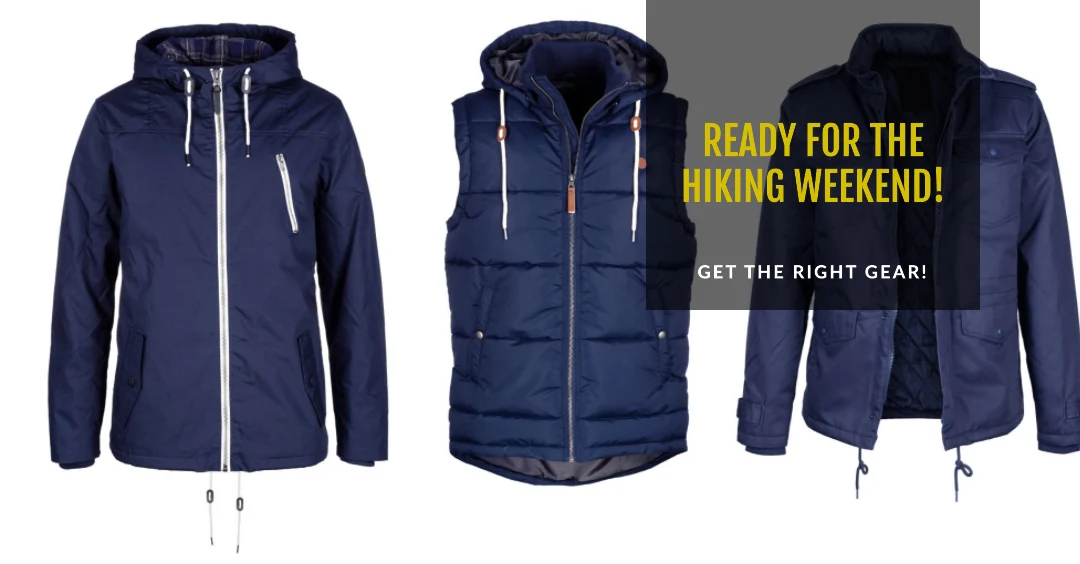Table of Contents
Some links on posts are affiliate links and will earn us a commission from qualifying purchases
Hiking is a great way to explore the outdoors and get some exercise while you do it. It’s also an excellent excuse to spend time with friends or family, as these types of trips are often much more fun when shared with others! However, if you’re new to hiking or just want to make sure that your first trip goes smoothly, here are some tips for what clothes to bring on your first hiking weekend.
One of the most important things to consider when packing for a hike is what clothes to bring. The type of clothing you’ll need will depend on a few factors: the time of year, the weather forecast, and how much walking you’ll be doing each day.
General advice for packing for your first hiking trip away
When it comes to outdoor activities, nothing spoils the fun quite like being either too hot or too cold. This is where dressing in layers comes in. By wearing layers, you have the flexibility to adjust to variable temperatures throughout the day. Moreover, choosing moisture-wicking fabrics, rather than cotton, will help keep you comfortable during those more intense moments of physical activity.
In the colder months, besides layering up, it’s also important to add items like thermal underwear, fleeces, and a waterproof outer layer. This will help keep you warm and dry, whether you’re battling black diamonds on the slopes or sledding down gentle hills with the kids.
On the other hand, during the summer, while you want to keep your own cool, you also need to keep yourself protected from the sun’s harmful rays. Don’t forget to pack plenty of sunscreen, and to wear a hat to shade your face and neck.
By following some simple tips, you can keep yourself comfortable in any conditions.
What to wear in Spring and Autumn
When hiking in the Spring or Autumn, you can never be too prepared for the elements. With fluctuating temperatures and sudden weather changes, it’s important to dress in layers to regulate your body temperature.
It all starts with a good base layer made of synthetic materials like polyester or nylon which will wick away sweat from your skin and keep you dry. Follow this up with a mid-layer of insulation to trap in the heat and keep you warm. Fleece is a great option for this intermediate layer, and it’s lightweight and easy to pack.
Then, top it off with a waterproof and windproof outer layer to protect yourself from rain and high winds. A good rain jacket will do the trick, and it’s crucial to have one just in case bad weather hits. You don’t want to be caught out in the rain unprepared!
It’s also important to remember to pack a hat and gloves to keep your extremities warm. These may take up a little extra space in your backpack, but they’re worth it in order to keep comfortable during your hike.
With all these layers, you’ll be able to adjust your clothing easily when needed and will be able to stay comfortable throughout your entire hike, no matter what the weather decides to throw at you!
What to wear in Summer
In the summertime, it’s important to dress smart while venturing out on those hiking trails. To begin with, wearing synthetic materials like polyester or nylon that can wick away sweat and dry out quickly is the best practice. These materials tend to be lightweight and comfortable and can keep you cool even when the sun is blazing down.
Choosing a light shirt or tank top over a base layer of synthetic materials is another useful tip that can add to your overall comfort. You can complete your summer look by wearing a pair of shorts or lightweight pants that allow easy movement while you hike. It’s also important to pack your sunscreen, sunglasses, and hat to stay safe from harmful UV rays.
As far as footwear is concerned, comfortable walking shoes or hiking boots are a must when you’re on a hike. However, it’s a good idea to break in the shoes before going on your hike so that you don’t experience any blisters once you’re out on the trail. Synthetic socks are preferable to cotton socks as they keep your feet dry and comfortable, making all the difference on a long hike.
What to wear in Winter
When hiking during the winter months, it is crucial to dress appropriately in order to maintain warmth and protection from the cold elements. Layering your clothing is essential for achieving this, as it helps to trap heat and provides a barrier against the chilly weather. The key lies in striking the perfect balance between wearing enough layers to stay warm and comfortable, without causing you to overheat or restrict your movement.
To begin with, a base layer of thermal underwear should be worn to provide a solid foundation for insulation. This layer is designed to wick moisture away from your skin, keeping you dry and warm in cold conditions. Following the base layer, a middle layer made from fleece or another insulating material is crucial for retaining body heat. This layer acts as a buffer between your base layer and the external environment, ensuring that you stay warm even when temperatures drop significantly.
For the outermost layer, a waterproof jacket and trousers are necessary to shield you from rain, snow, and wind. These items will help to keep you dry and protected, while still allowing for breathability and freedom of movement. Additionally, don’t forget to wear essential winter accessories such as a hat, scarf, and gloves to keep your extremities warm and shielded from the cold.
Finally, it’s always wise to bring along an extra pair of socks in case your feet become wet during your hike. Wet feet can lead to discomfort, blisters, and even hypothermia in extreme cases. Having a dry pair of socks readily available can make all the difference in ensuring a safe and enjoyable winter hiking experience.
In summary, layering is crucial when hiking in winter conditions. By dressing in the appropriate base, middle, and outer layers, as well as wearing essential winter accessories, you can stay warm, comfortable, and protected from the cold elements throughout your outdoor adventure.
What else do you need to bring on your first hiking trip away?
You’ll be doing a lot of walking on your hiking trip, so it’s important to make sure you have comfortable shoes. Trail running shoes or light hikers are a good option for most terrain. If you’re planning on doing any bouldering or scrambling, you’ll want to invest in a pair of sturdy hiking boots. Whatever time of year you’re hiking, always bring along a pair of comfortable walking shoes or boots, as well as socks that won’t give you blisters.
And last but not least, don’t forget your backpack! A small daypack is all you need for a day hike if you are staying at a B&B, but if you’re camping be sure to bring along a larger backpack with room for all your gear.
Conclusion – what clothing to pack on your first hiking trip
Taking your first hiking adventure? These simple tips will ensure your comfort and help you make the most of your outdoor experience.
Proper clothing is paramount to enjoying your hike. Plan ahead by checking the weather forecast and choosing clothing that suits the conditions. Consider wearing layers, as it’ll help you adjust to different temperatures throughout the day. And don’t forget to bring comfortable shoes!
Having the right gear can make all the difference. Invest in a good pair of hiking boots that provide ample support and traction for varied terrain. Consider carrying a backpack, too, to store water, snacks, and any other essentials.
With the right clothing and gear in hand, you’ll be able to focus on taking in the stunning scenery and making memories that will last a lifetime. Happy hiking!
Recent Posts
Hiking is one of the best ways to get outdoors, enjoy nature, and have fun. It’s a great activity for all ages, can be done anywhere with a variety of terrain options, and has health benefits like...
Getting out in the great outdoors can be the perfect way to reset and get some of the exercises you need - but is hiking once a week enough? The simple answer may surprise you, as there's more to...


